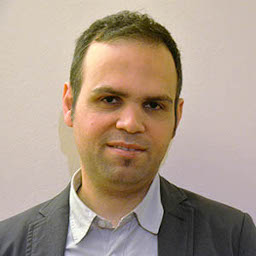Dr M. Reza Shirazi
MArch, Dr.-Ing.
Reader in Sustainable Urban Development
School of the Built Environment

Role
Reza Shirazi is a Reader in Sustainable Urban Development at the School of Built Environment. He is an expert in socio-cultural sustainability, neighbourhood planning and design, citizen participation, urban justice, discourse studies, and phenomenology of the built environment.
Reza has done extensive research on different regions and cities in Europe, North America and MENA (Middle East-North Africa). His research has been funded by European Commission (FP7, Horizon 2020), Gerda Henkel Foundation, Alexander von Humboldt Foundation, and DAAD (German Academic Exchange Service). He has wide experience in teaching in different areas of urban planning and design, and coordinating and directing international partnership projects.
Reza was Marie Skłodowska-Curie Global Fellow at the Institute of Urban and Regional Development (IURD) at UC Berkeley (2018-2020) and principal investigator of the EU-funded research project “(Un)Just Neighbourhoods: Socio-Spatial Justice in Urban Neighbourhoods”.
He has published several articles in leading peer-reviewed journals. His recent books include:
- Urban Social Sustainability: Theory, Practice and Policy (Routledge, 2019)
- Contemporary Architecture and Urbanism in Iran: Tradition, Modernity, and the Production of ‘Space-In-Between’ (Springer, 2018)
- Citizens’ Participation in Urban Planning and Development in Iran: Challenges and Opportunities (Routledge, 2017)
- Towards an Articulated Phenomenological Interpretation of Architecture: Phenomenal Phenomenology (Routledge, 2014).
Reza is director and writer of the documentary film 'Never Surrender'. This film narrates the community fight for environmental justice, and documents the conflict between people and government over the safety of the shipyard in Bayview-Hunters Point, San Francisco.
Reza leads the Land, Design and Development research group.
Teaching and supervision
Courses
Modules taught
- Urban Lab 2: Architecture and Open Space Design
- Urban Lab 4: Urban Design Masterplanning
Research
Research group membership
- Land, Design and Development (Leader)
- Healthy Aging and Care Network
- Sustainable and Resilient Futures Network
Research grants and awards
- 2021–2022 || PI || €12,000 ||Radical Urban Alternative: The limits and promises of the alternative urbanism in neoliberal era, Oxford Brookes’ Research Excellence & Impact Award Scheme 2020-21
- 2018–2021 || PI || €270,000 || (Un)Just Neighbourhoods; Socio-Spatial Justice in Urban Neighbourhooods; Marie Skłodowska-Curie Global Fellowship, H2020, European Commission. Hosted jointly by: Institute of Urban and Regional Planning (IURD), UC Berkeley, School of the Built Environment, Oxford Brookes University
- 2014–2016 || PI || € 309,000 || Contribution of Compact Neighbourhoods to the Social Sustainability; Marie Curie Intra-European Fellowships (IEF), FP7 Framework, European Commission. Hosted by: School of the Built Environment, Oxford Brookes University
- 2014–2016 || PI || €300,000 || International PhD Programme: Mahalle meets Stadtquartier; Berlin-Rabat-Tehran-Istanbul, DAAD-German Academic Exchange Service. Hosted by: Department of Architecture, Technische Universität Berlin, Berlin
- 2013 || PI || €15,000 || Space-In-Between: A Phenomenological Reading; Gerda Henkel Foundation, Germany. Hosted by: Department of Architecture, Technische Universität Berlin, Berlin
- 2013–2014 || CO-I || €200,000 || Participatory Urban Regeneration in Deteriorated Areas; Berlin-Cairo-Istanbul-Tehran; DAAD-German Academic Exchange Service. Hosted by: Zentrum Technik und Gesellschaft (ZTG), Technische Universität Berlin, Berlin
- 2009–2011 || PI || €85,400 || Sustainable Critical Regionalism in MENA Countries; Alexander von Humboldt Foundation. Hosted by: Department of Urban and Regional Planning, Technische Universität Berlin, Berlin
Centres and institutes
Groups
Projects
- Just 15-Minute City (JFMC)
- Just Neighbourhoods: Socio-Spatial Justice in Urban Neighbourhoods
- Promises and Limits of Alternative Urbanism in Neoliberal Era
- The Contribution of Urban Community Gardens to Inclusive and Sustainable Local Environments
Projects as Principal Investigator, or Lead Academic if project is led by another Institution
- Just 15-Minute City (JFMC) (01/06/2024 - 31/05/2026), funded by: European Commission, funding amount received by Brookes: £206,086
